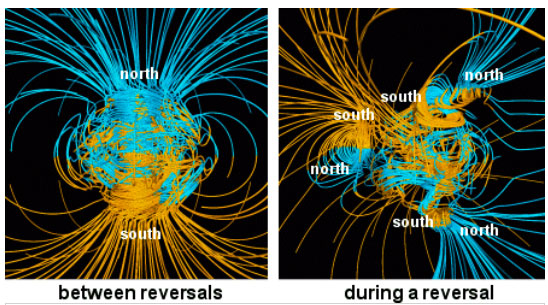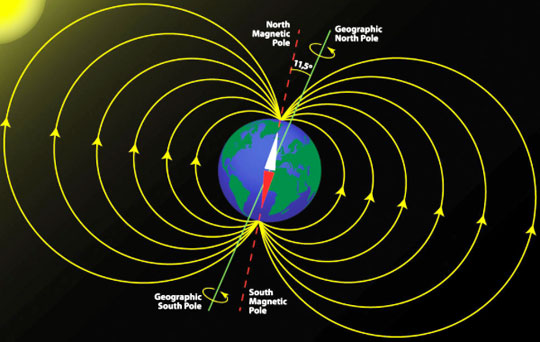“The last (pole) snap between reversed and normal (today) polarity happened between two (ancient ash) samples that are only two centimeters apart. That has to correspond to 100 years or less.”
- Paul Renne, Ph.D., Director, Berkeley Geochronology Center, UC-Berkeley


December 18, 2014 Berkeley, California - 786,000 years ago, iron atoms in Earth's liquid outer core began switching their orientation in opposition to the existing Earth magnetic field. What causes iron atoms to act like tiny magnets that revolt against the planetary magnetic field is not understood. But when it happens in increasing numbers, patches of reverse-aligned iron atoms keep growing until they dominate the rest of the Earth's liquid outer core — and the planet's magnetic field flips. That means what was the north magnetic pole becomes the south magnetic pole and what was the south becomes the north. According to ancient sedimentary rock, volcanic ash and sea floor core research, there have been 184 polarity changes in the last 83 million years. Recent ground research indicates that in the century before the last pole flip, the Earth's magnetic field weakened and strengthened and weakened and strengthened several times before locking into the current north and south magnetic poles.
Click here to subscribe and get instant access to read this report.
Click here to check your existing subscription status.
Existing members, login below:
© 1998 - 2025 by Linda Moulton Howe.
All Rights Reserved.

